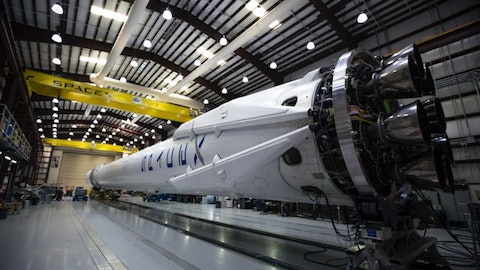In this article, we will be taking a look at the 25 most expensive countries in Africa. To skip our detailed analysis, you can go directly to see the 10 most expensive countries in Africa.
Africa is one of the most maligned continents in the world, and is home to most of the poorest countries in the world. African countries have suffered significantly because of many reasons including past colonization, high-income inequality, bad governance and also corruption, which is rife in many countries. Because of the high level of poverty, most governments do not have the luxury to address issues to advance the economy, with most resources being spent to fight poverty, though admittedly not very successfully.
Recent events have not really helped the continent either. The impact of Covid-19, even though not as strong as that in the U.S. or Europe, has still decimated the African economy, while the recent Russian invasion of Ukraine continues to have ramifications for Africa as well. However, perhaps the biggest barrier to investment in the continent is the lack of data available, which makes it difficult to truly value investments, increases costs of due diligence and also results in further false stories being floated around, which end up damaging the perception of the continent further. Even considering Covid-19, many African nations were unable to properly process the number of cases, illnesses and deaths caused by the virus, with some estimates suggesting that six out of seven cases went undetected in this respect.

Pixabay/Public domain
Africa is home to a host of countries which are ripe for investment, even if some of them are among the most expensive countries in Africa, and the fintech revolution currently being experienced by many nations in Africa. While most developed countries have already implemented fintech at an expanded level, most countries in Africa are counted among developing countries, with it currently being the fastest growing industry there with investment in 2021 crossing $1.6 billion which was more than twice the number committed in this space in 2020.
This fintech revolutions aims to digitize the economy of major nations in Africa, with digitization also being one of the most important methods in eliminating corruption as there is greater transparency in digitization as compared to a paper-based economy. After all, this is why banking is necessitated for many transactions above a certain threshold in most nations as cash transactions are much harder to trace. This fintech revolution is being led by many startup companies which are based in Africa, and could be ripe for investments, with a very high potential. This is why there are plenty of Fortune 500 companies which offer jobs in Africa including Alphabet Inc. (NASDAQ:GOOG), Unilever PLC (NYSE:UL), Microsoft Corporation (NASDAQ:MSFT) and Meta Platforms, Inc. (NASDAQ:META).
Because transaction costs are higher, there is a belief that an information asymmetry exists between the continent and some international investors. The lack of existence of proper valuation methods and data to support valuation represents an additional risk. On the other hand, it is important to consider the potential for really high returns with African economies being some of the fastest growing ones.
The most expensive countries in Africa are continuing to grow more expensive as a result of rising inflation that has gripped the globe. The lack of purchasing power has further hurt those residing in various African countries. Meanwhile, the Russian invasion of Ukraine in 2022 has led to food prices spiraling out of control. According to the United Nations, African nations have been hard hit by the Russia Ukraine war, including higher fuel prices, financial instability and food prices. To determine the most expensive countries in Africa, we determined the ratio between the real GDP of each company versus its GDP by PPP, ranking the countries based on how high the ratio is, with data taken from the World Bank. If you want to learn more about using this methodology, please take a look at the 35 most expensive countries in the world. Till then, let’s see which countries are the most expensive in Africa, starting with:
25. Nigeria
Real GDP / GDP by PPP ratio: 0.38
5 year GDP growth rate: 16.5%
Nigeria has recorded a healthy GDP growth rate over the last years, which is one of the reasons why the country’s President recently mentioned that Nigeria’s economy is ripe for investment even as he lamented the reduction in capital inflows with a particular focus on a reduction in foreign direct investment.
24. Malawi
Real GDP / GDP by PPP ratio: 0.39
5 year GDP growth rate: 25.3%
Malawi’s currency has depreciated heavily in the last one year, while the nation has also been directly impacted by the Russia Ukraine war, which has resulted in higher costs for the country.
23. Guinea-Bissau
Real GDP / GDP by PPP ratio: 0.40
5 year GDP growth rate: 17.8%
While foreign direct investment has traditionally remained high in Guinea-Bissau, the Covid-19 pandemic saw foreign direct investments decline drastically. While global foreign direct investment rebounded in 2021, Africa has not seen a similar return.
22. Mauritius
Real GDP / GDP by PPP ratio: 0.40
5 year GDP growth rate: 4.1%
While the growth in GDP of Mauritius is not as high as some other countries in Africa, the country’s economy is continuing to grow at a stable rate while its infrastructure is among the best in Africa.
21. Ghana
Real GDP / GDP by PPP ratio: 0.40
5 year GDP growth rate: 31.6%
Ghana’s real estate prices are significantly high which have resulted in the overall cost of living in the nation being high.
20. Kenya
Real GDP / GDP by PPP ratio: 0.40
5 year GDP growth rate: 30.8%
Recently, Kenya, one of the biggest African economies, has faced a massive increase in its cost of living, placing it among the most expensive countries in Africa. This increase has come from an increase in prices of basic commodities, especially in basic food commodities. Taxes have been increased on everyday goods as a result of pressure from the International Monetary Fund while the Kenyan shilling has depreciated as well. The global supply chain disruption as a result of the Covid-19 pandemic has also had a negative impact on prices of basic products in the nation.
19. Guinea
Real GDP / GDP by PPP ratio: 0.41
5 year GDP growth rate: 34.5%
Guinea saw political stability return in 2010 after the country’s president was democratically elected. Guinea is also home to huge iron ore deposits which could entice investors to consider placing their funds in the country.
18. Cameroon
Real GDP / GDP by PPP ratio: 0.41
5 year GDP growth rate: 22.8%
According to Credit Agricole, Cameroon is among the best placed African countries to receive foreign direct investment while it also has the potential to be counted among the most prosperous countries in the region.
17. Togo
Real GDP / GDP by PPP ratio: 0.42
5 year GDP growth rate: 30.3%
Togo is one of the few African nations which have posted a 5 year GDP growth rate higher than 30% which makes it attractive to potential investors, while its strategic location simply adds to the allure.
16. Botswana
Real GDP / GDP by PPP ratio: 0.42
5 year GDP growth rate: 19.9%
Botswana is one of the fastest growing economies in Africa, even though inequality is still really high in the country.
15. Senegal
Real GDP / GDP by PPP ratio: 0.43
5 year GDP growth rate: 31.2%
According to Deloitte, the country of Senegal boasts a stable political environment, which is a rarity in developing economies, and an ideal geographic location makes it a great country for foreign investment. You can see from its 5 year GDP growth rate as well that Senegal’s economy has grown by almost a third in just 5 years, which is no mean feat, and much higher than most developed economies.
14. Morocco
Real GDP / GDP by PPP ratio: 0.43
5 year GDP growth rate: 16.7%
The last several years have seen a major increase in prices in Morocco, which is why it is now one of the most expensive countries in Africa.
13. Liberia
Real GDP / GDP by PPP ratio: 0.43
5 year GDP growth rate: 10.4%
The Liberian dollar has been depreciating since 2017, and one of the major issues being faced by the nation is the disappearance of state funds amounting to over $104 million as shipping containers filled with freshly printed Liberian dollars disappeared from entry ports.
12. Lesotho
Real GDP / GDP by PPP ratio: 0.43
5 year GDP growth rate: 3.1%
Lesotho has seen continuous rising inflation, with many businesses in the country grappling with either increasing prices or their businesses going under as the prices of electricity, cooking oil and other amenities which have necessitated an increase in prices.
11. Chad
Real GDP / GDP by PPP ratio: 0.44
5 year GDP growth rate: 12.9%
Chad’s economy is primarily dependent on oil, while being landlocked has added to cost of goods in the country. A poor infrastructure is just the icing on the cake which has resulted in the country being so expensive.
Click to continue reading and see the 10 most expensive countries in Africa.
Suggested articles:
- 12 Best S&P 500 Dividend Stocks To Buy
- 12 Cheap Biotech Stocks To Buy
- 12 Best Low Priced Dividend Stocks To Buy
Disclosure: None. 25 most expensive countries in Africa is originally published at Insider Monkey.


